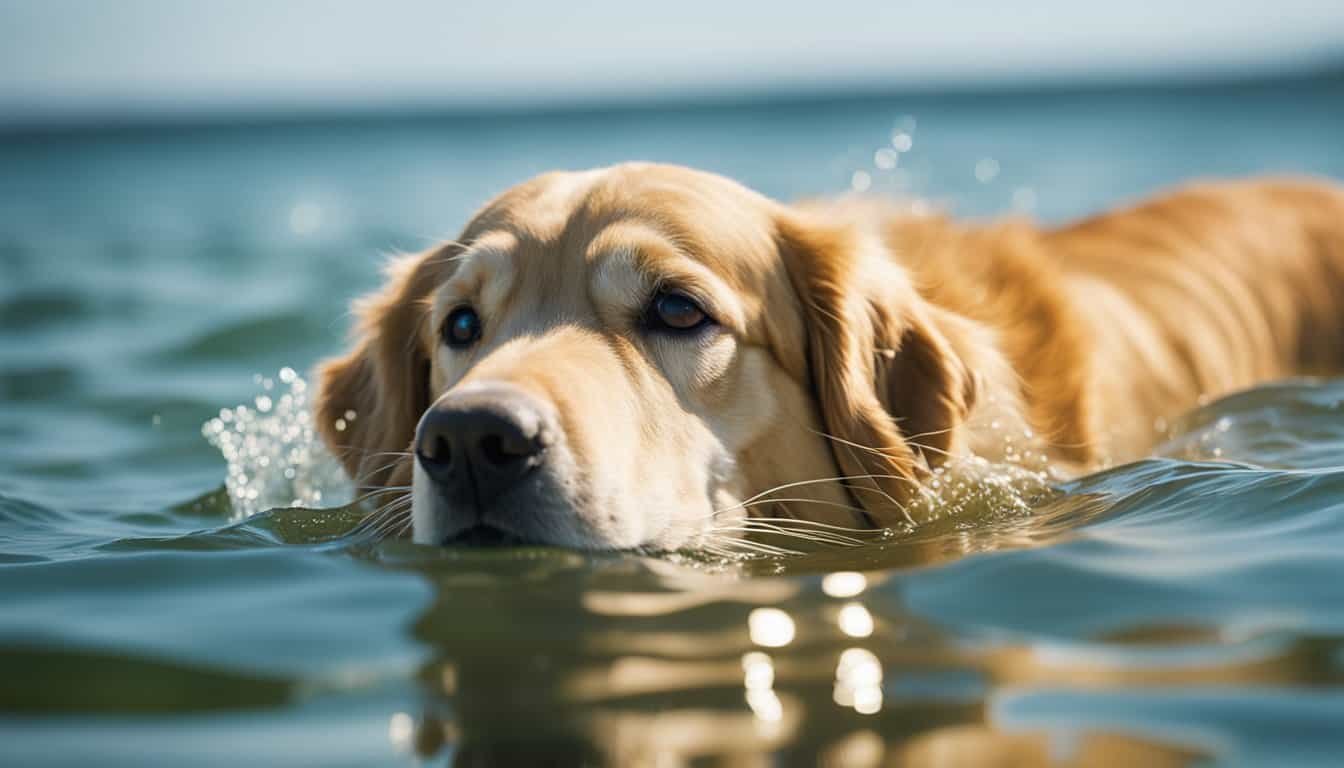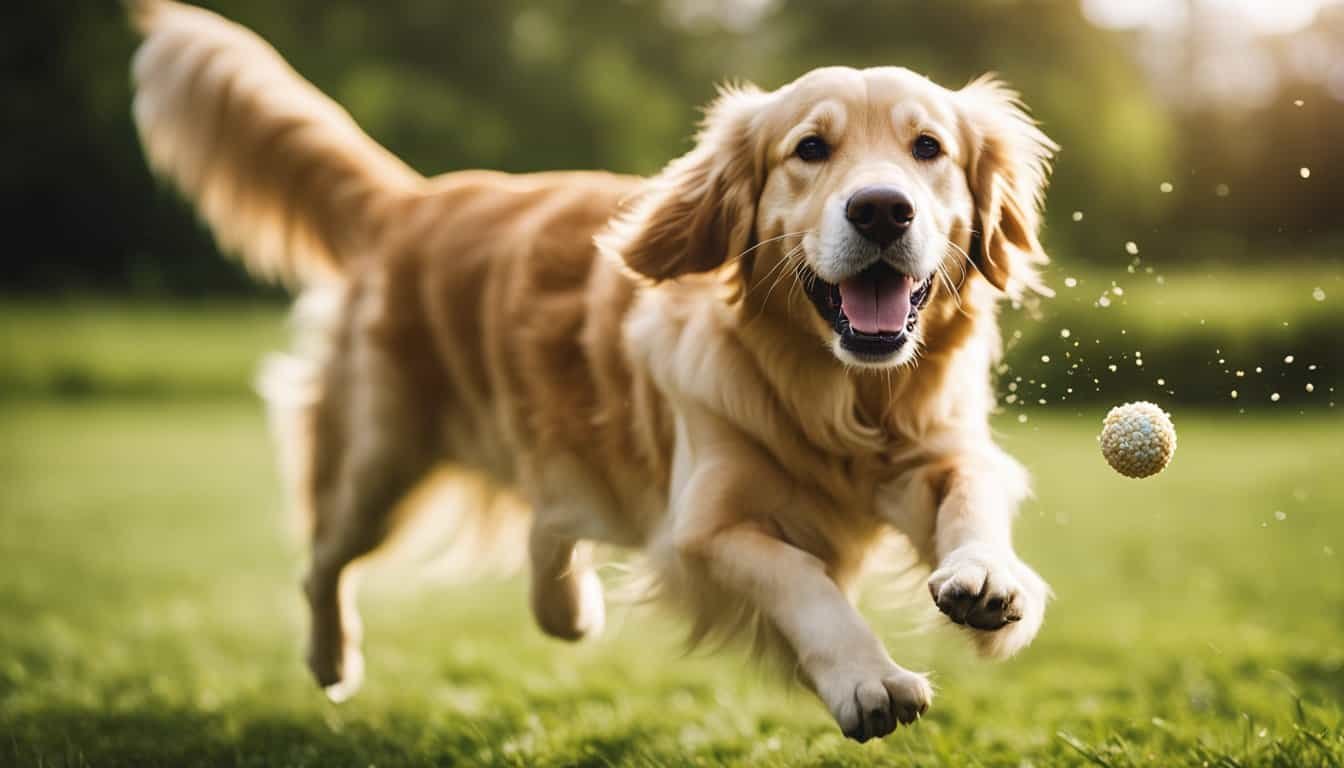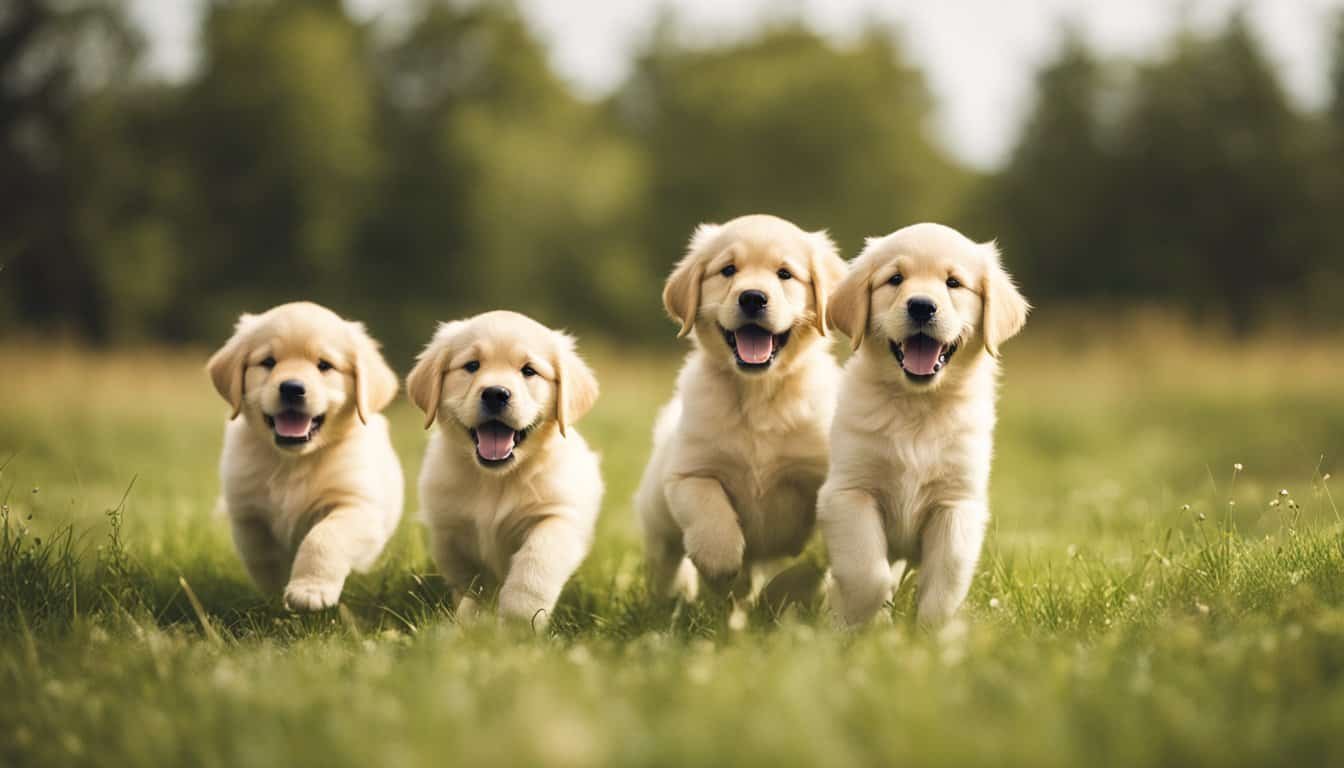If you’re a proud owner of a golden retriever, you might be wondering what happens when your furry friend goes into heat. Understanding the signs and behaviors associated with a golden retriever in heat is essential for responsible pet ownership. In this article, we’ll explore the stages of a golden retriever’s heat cycle and provide some helpful tips on how to manage this natural process. So, if you’re ready to learn more about what happens when a golden retriever is in heat, keep reading!
As a golden retriever owner, it’s important to be aware of the physical and behavioral changes that occur when your dog is in heat. The heat cycle in golden retrievers typically occurs every six to eight months and can last for about three weeks. During this time, your furry companion may experience swelling in the vulva, increased urination, and a change in behavior. Understanding these changes will help you provide the necessary care and support for your golden retriever during this period.
Managing a golden retriever in heat requires careful attention and consideration. It’s crucial to keep your dog away from intact male dogs to prevent unwanted pregnancies. Additionally, providing a comfortable and secure environment for your golden retriever is essential, as she may experience discomfort and restlessness during this time. By staying informed and taking the necessary precautions, you can ensure a smooth and stress-free experience for both you and your golden retriever when she is in heat.
Understanding the Heat Cycle in Golden Retrievers
As a proud owner of a golden retriever or a Goldendoodle, it’s essential to understand the heat cycle that your furry companion goes through. This knowledge can help you provide the best care and ensure a happy and healthy experience for both you and your dog. Here’s what you should know about the heat cycle in golden retrievers:
1. Timing is Everything
A typical heat cycle in golden retrievers lasts about three weeks. The cycle can occur every six to eight months, but this can vary from dog to dog. Understanding the timing of your dog’s heat cycle can help you be prepared and expect certain changes in behavior and physical appearance.
2. Proestrus Phase
The heat cycle begins with the proestrus phase, which typically lasts for about 7-10 days. During this time, you may notice that your dog’s vulva becomes swollen, and she might have increased urination. Pay extra attention to your furry friend’s behavior during this phase, as she may attract male dogs but is not yet ready to mate.
3. Estrus Phase
The estrus phase follows proestrus and usually lasts around 7-10 days as well. This is the peak of your golden retriever’s heat cycle when she is fertile. During this phase, her vulva will continue to be swollen, and she may exhibit a friendly and receptive behavior towards male dogs. It’s crucial to keep your dog away from intact male dogs to avoid unwanted pregnancy.
4. Diestrus and Anestrus Phases
After the estrus phase, there’s the diestrus phase, which lasts approximately 60-90 days. This is a period of sexual inactivity, and your dog’s reproductive system returns to its normal state. Finally, there’s the anestrus phase, which is the resting period before the next heat cycle begins.
5. Care During the Heat Cycle
During your golden retriever’s heat cycle, it’s best to keep her indoors and away from male dogs to prevent roaming or mating attempts. Comfort is key during this time. Provide soft bedding, ensure that your dog has access to plenty of water, and monitor her closely for any behavioral changes or signs of discomfort.
Understanding the heat cycle in golden retrievers is crucial for responsible pet ownership. By being informed and prepared, you can ensure a smooth and stress-free experience for both you and your beloved furry friend. Remember
Signs and Symptoms of a Golden Retriever in Heat
As a dog lover and owner of a golden retriever and a Goldendoodle, you understand the importance of being knowledgeable about your dog’s reproductive health. When your female golden retriever is in heat, it’s crucial to recognize the signs and symptoms. Here are a few things to look out for:
- Swollen Vulva: One of the earliest signs that your golden retriever is entering the heat cycle is a swollen vulva. It may appear red and larger than usual.
- Bloody Discharge: During the proestrus phase, which is the first phase of the heat cycle, you may notice a bloody discharge from your dog’s vulva. This discharge can vary in color and intensity, ranging from light pink to deep red.
- Frequent Urination: Your golden retriever may urinate more frequently than usual when she is in heat. This is because the hormonal changes can affect her bladder.
- Changes in Behavior: Your usually friendly and easygoing golden retriever may become more irritable or clingy during her heat cycle. She may also exhibit restlessness or an increase in vocalizations.
- Attracting Male Dogs: Perhaps the most obvious sign that your golden retriever is in heat is the sudden interest she receives from male dogs. They may become more persistent and even exhibit behaviors like mounting or marking to demonstrate their attraction.
Remember, these signs and symptoms may vary from one dog to another, so it’s essential to be observant and familiarize yourself with your golden retriever’s normal behavior. It’s also crucial to take necessary precautions to prevent any unwanted pregnancies during this time. Keeping your golden retriever away from intact male dogs and considering spaying are effective ways to manage her heat cycle.
Knowing the signs and symptoms of your golden retriever’s heat cycle allows you to provide the care and attention she needs during this time. By understanding her needs and taking the necessary preventive measures, you can ensure a smooth and stress-free experience for both you and your furry companion.
Behavioral Changes During Heat
When your golden retriever is in heat, you may notice certain behavioral changes that are specific to this stage in their reproductive cycle. Understanding these changes can help you provide the best care for your furry friend during this time. Let’s explore some of the common behavioral changes you might observe when your golden retriever is in heat.

« Unleashing the Aquatic Wonders: Discover Why Golden Retrievers Are the Ultimate Water Dogs
Discover the Surprising Secrets to Successfully Managing Multiple Female Golden Retrievers »
Increased Restlessness and Agitation
During heat, your golden retriever may exhibit signs of restlessness and agitation. She may pace around the house, whine, or exhibit excessive licking behavior. These behaviors are often due to hormonal changes happening within her body and her desire to attract male dogs. Providing her with a comfortable and secure space can help alleviate some of her restlessness.
Changes in Appetite
Just like humans, dogs can experience changes in appetite during their heat cycle. Some golden retrievers may have an increased or decreased appetite during this time. Keep an eye on your dog’s food intake and consult with your veterinarian if you notice any drastic changes, as it could be a sign of an underlying health issue.
Increased Affection and Attention-Seeking
When a golden retriever is in heat, she may seek more attention and affection from you. She may constantly lean against you, paw at you, or nudge you for petting. This behavior is her way of seeking comfort and reassurance during this hormonal period. Take some extra time to cuddle and provide her with the attention she needs.
Marking Behavior
During heat, your golden retriever may engage in marking behavior more frequently. This involves urinating small amounts in various locations to leave her scent behind. This behavior is a way for her to communicate her fertility status to male dogs and assert her presence. Be prepared to clean up any accidents and consider using dog diapers or keeping her confined to certain areas to manage this behavior.
Heightened Interest from Male Dogs
One of the most noticeable changes during your golden retriever’s heat cycle is the increased interest and attention she receives from male dogs. You may notice unfamiliar dogs lingering near your property or trying to get closer to your dog. It’s important to be extra vigilant during this time and ensure that your golden retriever is always supervised when outdoors to prevent any unwanted mating.

Remember, every golden retriever is unique, and individual experiences may vary. If you have any concerns or questions about your dog’s behavior during heat, don’t hesitate to reach out to your veterinarian for guidance and support.
Managing a Golden Retriever in Heat
As a proud owner of a beautiful golden retriever or a lovable Goldendoodle, it’s important to understand how to manage your furry friend when she goes into heat. When your dog is in heat, she will experience some physical and behavioral changes that require your attention and care. Let’s explore a few tips on how to effectively manage your golden retriever during this time.
1. Provide a Comfy Safe Space
During her heat cycle, your dog may feel more agitated or restless. It’s essential to create a comfortable and secure space where she can relax and feel at ease. Set up a cozy spot with her favorite blanket and toys, away from any potential distractions.
2. Monitor Her Food Intake
Some dogs may experience changes in appetite during their heat cycle. Keep a close eye on her food intake and ensure she is getting the proper nutrition she needs. If you notice any significant changes, consult with your veterinarian to make any necessary adjustments to her diet.
3. Offer Extra Attention and Cuddling
Your furry friend might crave more love and attention during this time. Be sure to provide extra cuddles and affection to help her feel reassured and loved. Engage in activities that she enjoys, such as gentle playtime or relaxing cuddle sessions.

4. Manage Marking Behavior
While in heat, female dogs may exhibit marking behavior, especially if they have not been spayed. Consider using dog diapers or confining her to a specific area to prevent any messes. Make sure to change the diapers regularly and keep the confined space clean.
5. Stay Vigilant to Avoid Unwanted Mating
During her heat cycle, female dogs release pheromones that attract male dogs. It’s crucial to be vigilant and prevent any unwanted mating. Keep her away from intact male dogs and always supervise her when outdoors or in public spaces.
Remember, it’s important to consult with your veterinarian if you have any concerns or questions about your dog’s behavior during heat. They can provide specific guidance tailored to your furry friend’s individual needs.
Managing a golden retriever in heat requires patience, understanding, and extra care. By following these tips, you can ensure a safe and comfortable experience for your beloved four-legged companion during this natural part of her life cycle.
Health Concerns and Care Tips for a Golden Retriever in Heat
When your beloved golden retriever enters her heat cycle, it’s essential to take extra care to ensure her health and well-being. Understanding the specific needs of a dog in heat can help you provide the best care possible. As a fellow dog lover with experience working at animal shelters and veterinary offices, here are some health concerns and care tips to keep in mind for your golden retriever or Goldendoodle.

1. Increased Vaginal Discharge: During her heat cycle, your golden retriever may experience an increased amount of vaginal discharge. It’s crucial to keep an eye on this to ensure there are no signs of infection or abnormalities. If you notice any unusual discharge or odor, consult with your veterinarian for guidance.
2. Frequent Urination: Your furry friend may urinate more often when she’s in heat. This is a natural response to attract potential mates. Make sure you provide plenty of opportunities for bathroom breaks and maintain a clean environment to prevent any accidents.
3. Avoid Unwanted Mating: If you don’t intend to breed your golden retriever, it’s crucial to take preventive measures to avoid unwanted mating. Keep her securely confined indoors or in a securely fenced yard. Ensure she is always supervised when outside and consider keeping her on a leash during walks.
4. Increased Emotional Sensitivity: Dogs in heat can experience heightened emotional sensitivity. Your golden retriever may exhibit changes in behavior, becoming more affectionate or irritable. Offer her extra love and attention during this time, providing a secure and comfortable space for her to relax.
5. Consult with Your Veterinarian: Each dog is unique, and it’s important to consult with your veterinarian for personalized guidance. They can provide valuable advice on managing your golden retriever’s heat cycle, including diet, exercise, and possible medical interventions if necessary.

Remember, being attentive and caring for your golden retriever during her heat cycle will ensure her comfort and overall well-being. By following these health concerns and care tips, you can navigate this natural phase while keeping your furry friend happy and healthy.
Conclusion
Managing a golden retriever during their heat cycle requires patience, understanding, and extra care. Creating a comfortable and secure space, monitoring food intake, and offering extra attention and cuddling are all important aspects of ensuring your dog’s well-being. Additionally, managing marking behavior and being vigilant to prevent unwanted mating are essential. Remember to consult with a veterinarian for personalized guidance tailored to your dog’s individual needs. They can provide specific recommendations and advice to help you navigate this period.
It’s also important to be aware of the increased vaginal discharge, frequent urination, and emotional sensitivity that dogs in heat may experience. Taking preventive measures, such as keeping your dog indoors or using protective clothing, can help avoid unwanted mating. By staying informed and proactive, you can ensure that your golden retriever remains comfortable and safe throughout their heat cycle. Remember, your dog’s health and happiness are in your hands, and with the right care, you can successfully manage this natural process.

















